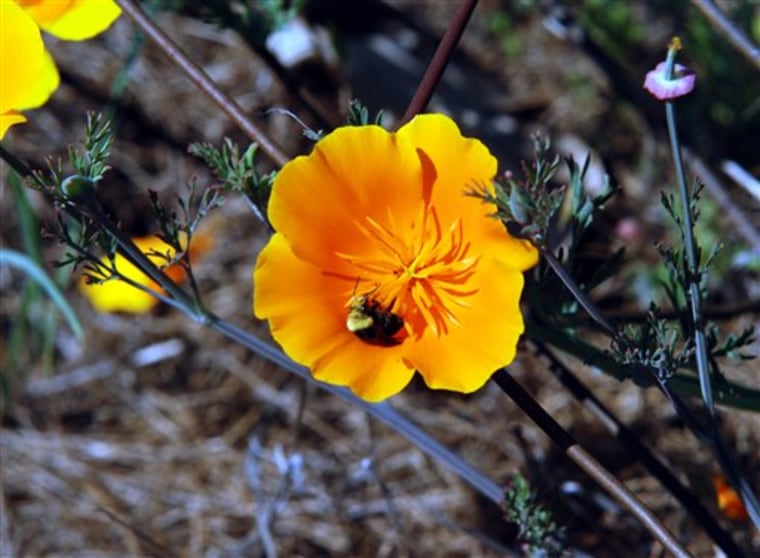With bumblebees and other native insects that pollinate crops dying off, scientists are working on the best ways to restore natural habitat on or near farms.
The Xerces Society, based in Portland, announced this week it has received $458,000 from the federal Natural Resources Conservation Service to do some of the work.
Part of the money will go toward tracking how pollination improves on farmland around Davis, California, where farmers have established mile-long hedgerows to provide food and shelter for pollinators like bumblebees and insects such as ladybugs, which prey on pests.
The rest will be spent on working with universities and agricultural organizations to develop local combinations of trees, shrubs and plants that can be used nationwide to make life better for beneficial insects.
"If you provide the habitat, what we see is these animals will come and will help farmers," said Scott Hoffman Black, executive director of the Xerces Society.
Farmers have been relying increasingly on native pollinators such as bumblebees since honeybees — a European transplant — began dying from a mysterious combination of ailments known as colony collapse disorder. But many of the 4,000 species of bumblebees in North America also are threatened, primarily by disease and habitat loss.
Modern industrial farming has been terrible for native pollinators, said Claire Kremen, associate professor of zoology at the University of California at Berkeley. Crops are planted so they cover every inch of ground, and they only bloom once a year, so there is little food for bumblebees to eat the rest of the time. Bumblebees also need undisturbed ground or trees for nests, and there is little of that.
"It's kind of ironic that the place where we need them most to pollinate fruits and vegetables, that's where we don't have them any longer," Kremen said.
The habitat project created six hedgerows as much as a mile long and 80 feet wide planted with trees, shrubs and herbs that flower from January — when the first bumblebees emerge from hibernation — through fall, when the bees die off or go back into hibernation. Farmers planted the hedgerows in 2007, and about 60 bumblebee species use them.
The nectar and pollen also will help honeybees by providing a more nourishing source of food than the sugar water they usually get from beekeepers, Kremen said.
